
Brazilian Cherry Slabs – being readied for export to Sarasota, Florida


Cutting FSC certified Tigerwood logs at our sister mill in Brazil. These logs will be cut into wholesale live edge table slabs, decking, deck tiles, cabinet grade lumber, and interior hardwood flooring. From our sawmill, they will head to Advantage Florestal to our nearby kiln drying operation, then onward around the world to awesome projects near you.
Joblots or containers shipped worldwide.
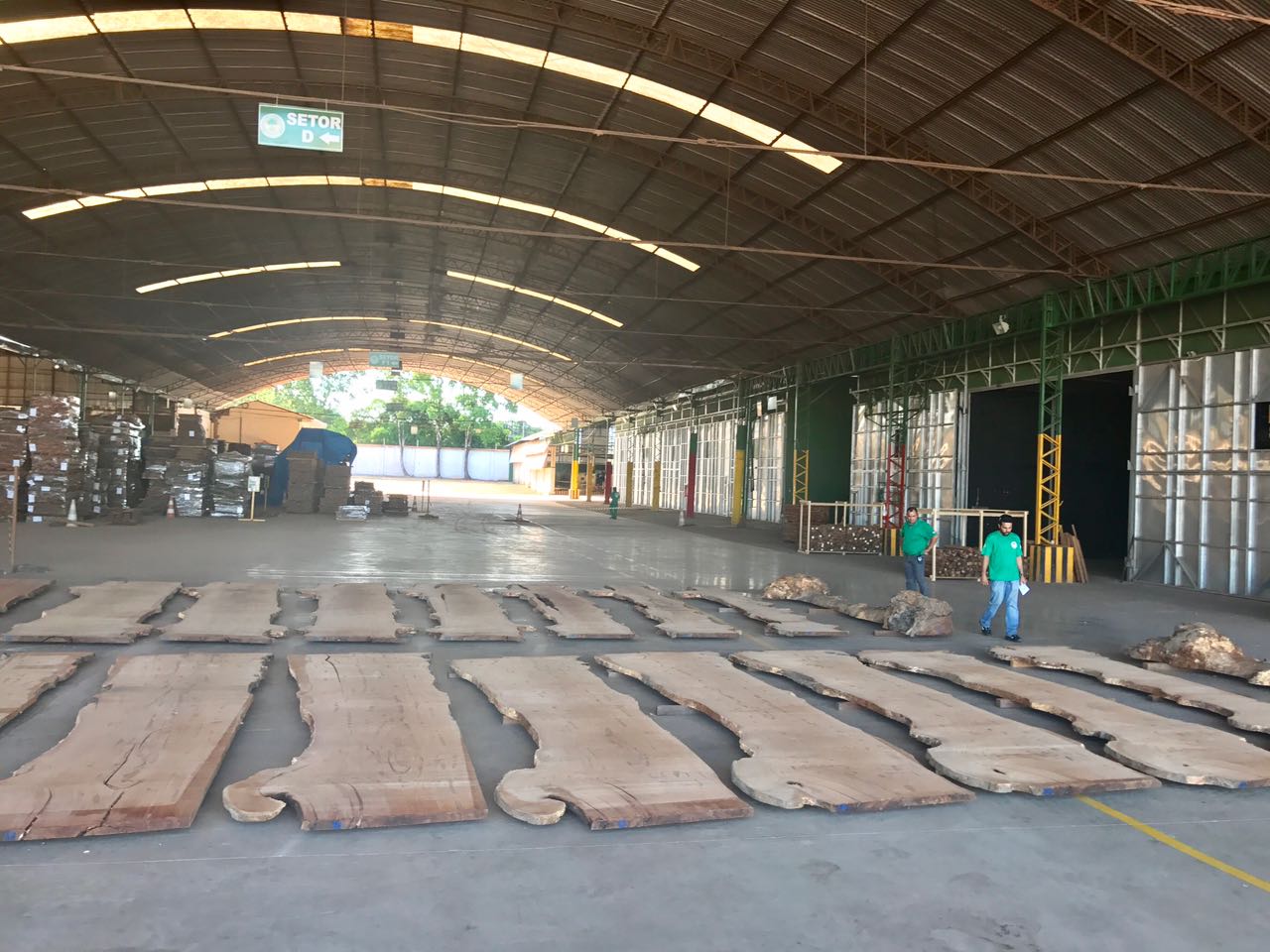
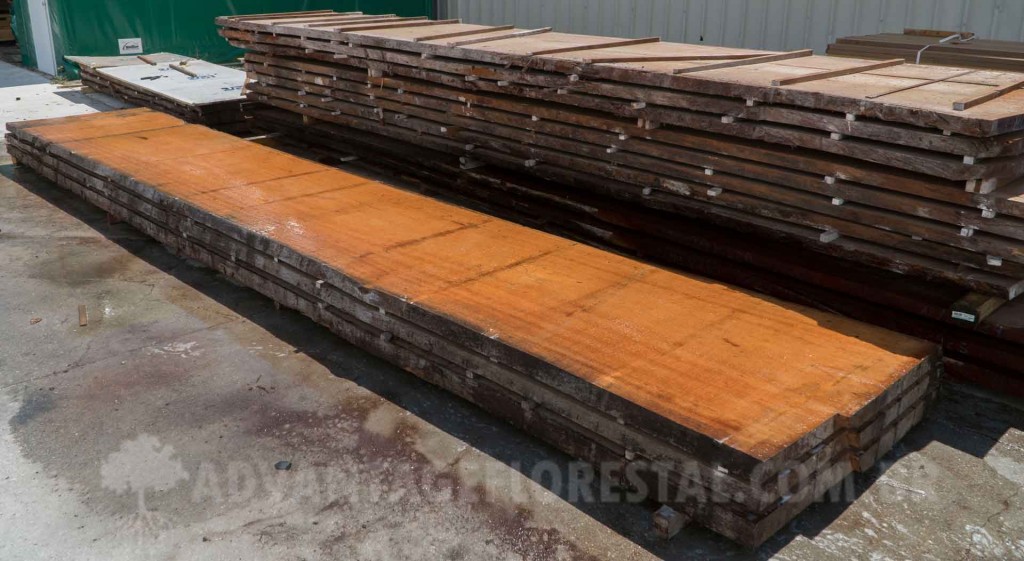
Common Name: | Common Name: Brazilian Mahogany, Quaruba Rosa, Quaruba Cedro |
Botanical Name: | Vochysia spp (maxima) (melinoni) |
Indigenous to: | Northern South America from Brazil, east to Equador |
Modulus of Rupture: | 11,300 lbf/in2 |
Shrinkage: | Tangential: 9.8% Radial: 3.7% Volumetric: .52% T/R Ratio: 2.6 |
How is it dried: | Kiln Dried (KD) |
Is it dried quickly: | No, if dried too fast than risk of checking, cracking, and cellular collapse. |
Stability: | Quaruba remains stable after the drying process but should not be left in the elements without some cover |
Exterior Wood Recommendation: | class 2 – inside or under cover (dampness possible) Should not be left outside due to the fact of it being slightly softer than our regular outdoor woods it will absorb and expel moisture at quicker rates. This means that it has a chance to warp and/or check. |
Fastening Method: | Should be predrilled for screws |
Ecosystem impact: | This tree is not threatened by any over-logging and is not listed on any CITES Appendices to be regulated for over logging. |
Toxicity and allergic reactions: | Rare to none |
Odor: | No distinct smell |
Product we manufacture using this species: | Info coming soon |
Other common uses: | Veneer for interior of plywoodVeneer for back or face of plywood Interior joinery Boxes and crates Formwork Interior panelling Blockboard Fiber or particle boards Furniture or furniture components Moulding Turned goods Glued laminated |
Susceptibility to | |
Dry Wood borers: | Susceptible – sapwood not or slightly demarcated (risk in all the wood) |
Fungi: | Class 4 – poorly durable |
Termites: | Class S – susceptible |
Treatability: | Class 3 – poorly permeable |
Janka Hardness: |
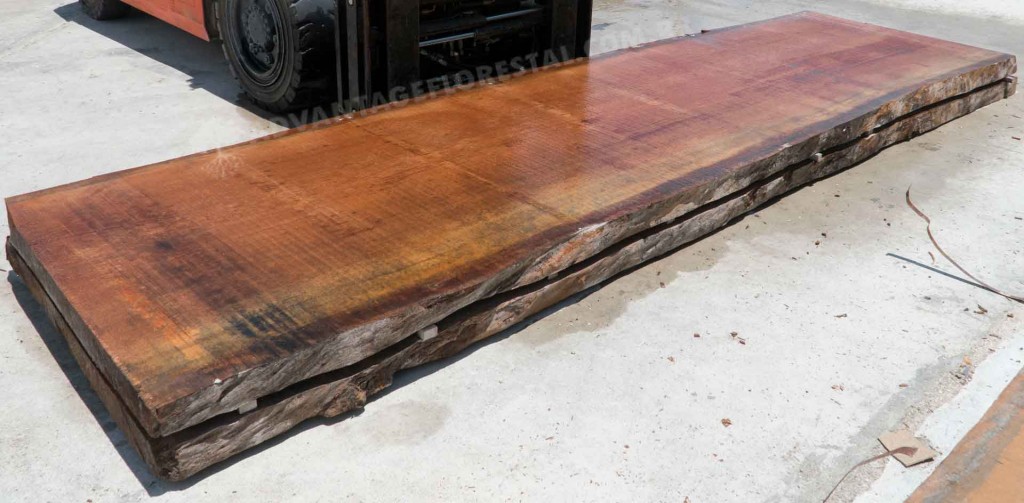
Common Name: | Brazilian Mahogany, Cambara, Mandioqueira, Florecillo, Quaruba Rana |
Botanical Name: | Qualea spp |
Indigenous to: | Throughout tropical America from southern Mexico to Peru, but most abundantly in the Guianas and Brazil. |
Modulus of Rupture: | 20,000 lbf/in2 |
Shrinkage: | Tangential – 8.4% Radial – 4.4% Volumetric – 11.4% T/R Ratio – 1.9 |
How is it dried: | Kiln Dried (KD) |
Is it dried quickly: | Yes, but needs to be controlled as it will dry too fast unevenly if allowed to air dry in a non-controlled environment. |
Stability: | Cambara remains stable after the drying process but should not be left in the elements without some cover as it is rated as poor stability |
Exterior Wood Recommendation: | It can be used if only the heartwood is present. Sub species are commonly mixed together as there is no apparent differences to the naked eye. Some are more resistant to decay than others so it is best used as an interior wood. class 2 – inside or under cover (dampness possible) |
Fastening Method: | Should be predrilled for screws |
Ecosystem impact: | This tree is not threatened by any over-logging and is not listed on any CITES Appendices to be regulated for over logging. |
Toxicity and allergic reactions: | Rare to none |
Odor: | No distinct smell |
Products we manufacture using this species: | Info coming soon |
Other common uses: | Exterior joinery Exterior panelling Interior joinery Interior panelling Formwork Glued laminate Boxes and crates Veneer for interior of plywood Veneer for back or face of plywood Blockboard Light Carpentry Wood frame house Moulding Furniture or furniture components Sliced veneer Bridges (parts not in contact with water or ground) Wood-ware |
Susceptibility to | |
Dry Wood borers: | durable – sapwood demarcated (risk limited to sapwood) |
Fungi: | class 3 – moderately durable |
Termites: | class S – susceptible |
Treatability: | class 2 – moderately permeable |
Janka Hardness: | |
More Product Information

Common Name: | Info coming soon |
Botanical Name: | Apuleia Leiocarpa |
Indigenous to: | The variety “molaris” is found in the Amazonian forest, mainly in flooded areas. The main species, Apuleia leiocarpa is found mainly in the South of Brazil, in the Atlantic coast forests, easily colonizing cleared areas. |
Modulus of Rupture: | 18,530 lbf/in2 (127.8 MPa) |
Shrinkage: | Radial: 4.2%, Tangential: 7.5%, Volumetric: 11.4%, T/R Ratio: 1.8 |
How is it dried: | kiln-dried (KD) |
Is it dried quickly: | No should be dried slowly |
Stability: | Moderately Stable to Stable |
Exterior Wood Recommendation: | Use class ensured by natural durability: class 2 – inside or under cover (dampness possible) Species covering the use class 5: YesAgainst dry wood borer attacks:does not require any preservative treatment In case of risk of temporary humidification: requires appropriate preservative treatment In case of risk of permanent humidification: use not recommendedThe natural durability of Grapia is very variable. In some cases, this variability can be observed inside the same piece of wood. This species cannot be used without appropriate preservative treatment for end-uses under use class 3 except for some parts of a work such as windows, less exposed than others (entrance doors, shutters, …). This species naturally covers the use class 5 (end-uses in marine environment or in brackish water) due to its high silica content. However, it is not recommended to use it in case of strong structural constraints due to its medium mechanical properties; it is most suitable for end-uses like shipbuilding. |
Fastening Method: | Nailing / screwing: good but pre-drilling is necessary Gluing: Yes |
Ecosystem impact: | This wood species is not listed in the CITES Appendices or on the IUCN Red List of Threatened Species. |
Toxicity and allergic reactions: | Although severe reactions are uncommon, Garapa has been reported to occasionally cause skin irritation. |
Odor: | Nothing discernable |
Products we manufacture using this species: | decking, flooring, dimensional lumber, E4E, S4S, RS (Rough Sawn), deck tiles, and table slabs |
Other common uses: | Exterior joinery Light carpentry Heavy carpentry Hydraulic works (seawater) Ship building (ribs) Cooperage Turned goods Current furniture or furniture components Wood frame house Flooring Industrial or heavy flooring Interior joinery Ship building Stairs (inside) Vehicle or container flooring Cabinetwork (high class furniture) Tool handles (resilient woods) Formwork Boxes and crates Wood-ware Note: Finishing is easy but filling is recommended. |
Susceptibility to | |
Dry Wood borers: | Durable – sapwood demarcated (risk limited to sapwood) |
Fungi: | Class 3 – moderately durable |
Termites: | Class M – moderately durable |
Treatability: | Class 3 – poorly permeable |
Janka Hardness: | |
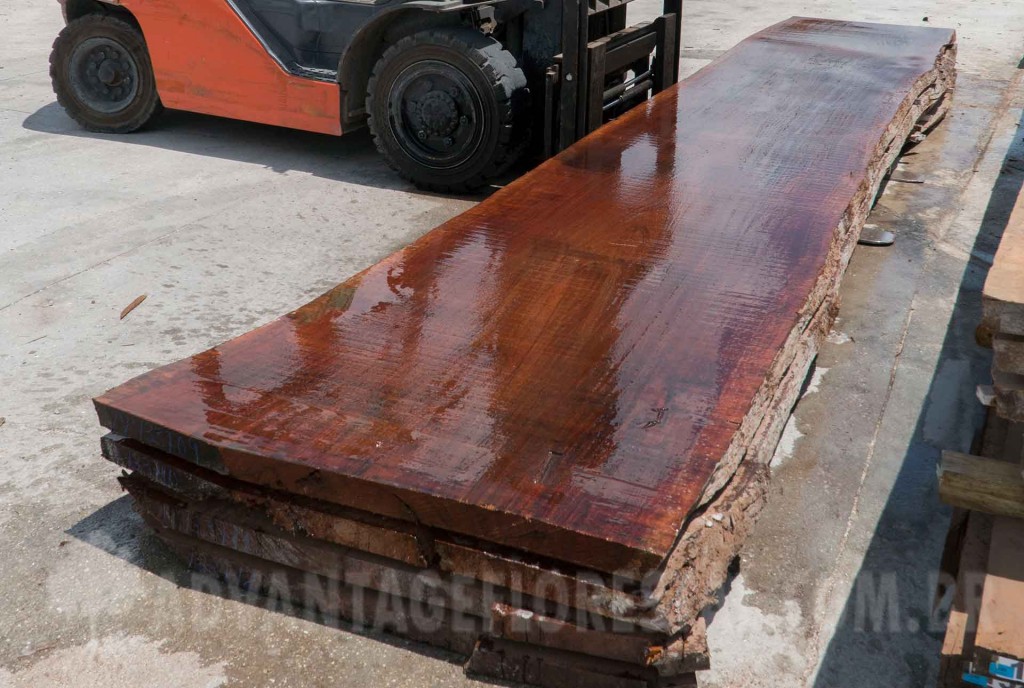
Common Name: | Jatoba, Brazilian Cherry |
Botanical Name: | Hymenaea courbaril |
Indigenous to: | Central America, southern Mexico, northern South America, and the West Indies |
Modulus of Rupture: | 22,510 lbf/in2 (155.2 MPa) |
Shrinkage: | Radial: 4.2%, Tangential: 8.0%, Volumetric: 12.1%, T/R Ratio: 1.9 |
How is it dried: | Info coming soon |
Is it dried quickly: | Normal drying time Initial air drying under cover prior to kiln drying is recommended. Risks of cracks more or less important according to specific gravity. |
Stability: | High Moderately Stable to Stable |
Exterior Wood Recommendation: | Class 3 – not in ground contact, outside |
Fastening Method: | Nailing/screwing: good but pre-drilling is necessary Gluing: Yes (for interior only) Note: Gluing must be done with care (very dense wood). |
Ecosystem impact: | This wood species is not listed in the CITES Appendices, and is reported by the IUCN as being a species of least concern. |
Toxicity and allergic reactions: | Although severe reactions are quite uncommon, Jatoba has been reported to cause skin irritation. |
Odor: | No distinguishable odor |
Products we manufacture using this species: | Info coming soon |
Other common uses: | Cabinetwork (high-class furniture)Furniture or furniture components Sliced veneer Industrial or heavy flooring Flooring Stairs (inside) Wood frame house Exterior joinery Exterior paneling Interior paneling Tool handles (resilient woods) Turned goods Shipbuilding (ribs) Vehicle or container flooring Musical instruments Arched goods Wood-ware Sculpture Moulding Cooperage |
Susceptibility to | |
Dry Wood borers: | Durable – sapwood demarcated (risk limited to sapwood) |
Fungi: | Class 2-3 – durable to moderately durable |
Termites: | Class M – moderately durable |
Treatability: | Class 4 – not permeable |
Janka Hardness: | |
Common Name: | Goncalo Alves, Tigerwood, Jobillo |
Botanical Name: | Astronium spp. (A. graveolens and A. fraxinifolium) |
Indigenous to: | From Mexico southward to Brazil |
Modulus of Rupture: | 16,970 lbf/in2 (117.0 MPa) |
Shrinkage: | Radial: 4.2%, Tangential: 7.8%, Volumetric: 11.2%, T/R Ratio: 1.9 |
How is it dried: | kiln-dried (KD) |
Is it dried quickly: | Normal Drying Schedule is applicable to thickness lower or equal to 38 mm. It must be used in compliance with the code of practice. For thickness from 38 to 75 mm, the air relative humidity should be increased by 5 % at each step. For thickness over 75 mm, a 10 % increase should be considered |
Stability: | Info coming soon |
Exterior Wood Recommendation: | Class 4 – in ground or fresh water contact |
Fastening Method: | Nailing / screwing: good but pre-drilling is necessary Gluing: poor not recommended without proper oily wood procedures |
Ecosystem impact: | This wood species is not listed in the CITES Appendices or on the IUCN Red List of Threatened Species. |
Toxicity and allergic reactions: | Although severe reactions are quite uncommon, Goncalo Alves has been reported as a sensitizer. Usually most common reactions simply include eye and skin irritation. |
Odor: | No distinguishable odor |
Product we manufacture using this species: | Decking, hardwood flooring, dimensional lumber, E4E, S4S, RS (Rough Sawn), deck tiles, and wood slabs |
Other common uses: | Cabinetwork (high class furniture)Sliced veneer Flooring Wood-ware Turned goods Exterior joinery Interior joinery Interior panelling Heavy carpentry Musical instruments Tool handles (resilient woods) Sculpture |
Susceptibility to | |
Dry Wood borers: | Durable – sapwood demarcated (risk limited to sapwood) |
Fungi: | Class 1 – very durable |
Termites: | Class D – durable |
Treatability: | Class 4 – not permeableAgainst dry wood borer attacks: does not require any preservative treatment In case of risk of temporary humidification: does not require any preservative treatment In case of risk of permanent humidification: does not require any preservative treatment |
Janka Hardness: | |
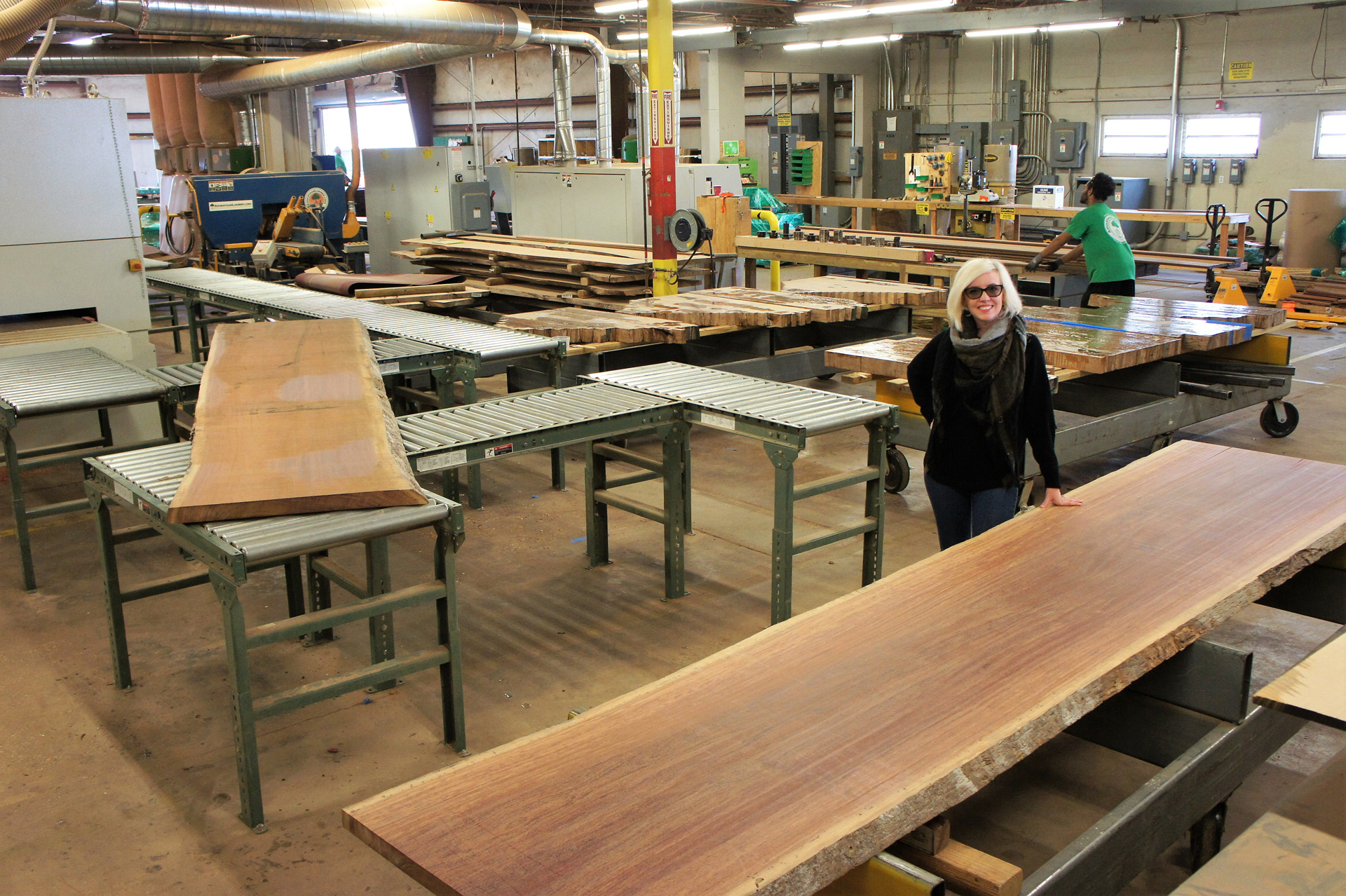
Common Name: | Almendrillo, Tonka, and Tonquin Bean |
Botanical Name: | Dipteryx Odorata spp. |
Indigenous to: | The Northern regions of South America |
Modulus of Rupture: | 25,390 lbf/in2 |
Shrinkage: | Radial: 5.3%, Tangential: 7.7%, Volumetric: 12.6%, T/R Ratio: 1.5 |
How is it dried: | Info coming soon |
Is it dried quickly: | No Drying must be done with care and slowly. Risks of casehardening for thick boards. |
Stability: | Moderately Stable to Stable |
Exterior Wood Recommendation: | class 4 – in ground or fresh water contact Against dry wood borer attacks: does not require any preservative treatment |
Fastening Method: | Nailing / screwing: Good but must be pre-drilles Gluing: Poor |
Ecosystem impact: | Info coming soon |
Toxicity and allergic reactions: | Info coming soon |
Odor: | Unpleasant odor when green. |
Product we manufacture using this species: | Info coming soon |
Other common uses: | Sleepers Bridges (parts in contact with water or ground) Bridges (parts not in contact with water or ground) Hydraulic works (fresh water) Industrial or heavy flooring Wood frame house Poles Stakes Ship building (planking and deck) Cooperage Heavy carpentry Sliced veneer Tool handles (resilient woods) Turned goods Hydraulic works (seawater) Note: Slicing: only for decorative veneer. |
Susceptibility to | |
Dry Wood borers: | durable – sapwood demarcated (risk limited to sapwood) |
Fungi: | Very Durable |
Termites: | class D – durable |
Treatability: | class 4 – not permeable |
Janka Hardness: | |
More Product Information

Common Name: | Iron Wood, Lapacho, Brazilian Walnut, or Yellow Poui |
Botanical Name: | Tabebuia spp. |
Indigenous to: | Tropical Americas (Central and South America) it is also farmed commercially. |
Modulus of Rupture: | 25,660 lbf/in2 (177.0 MPa) |
Shrinkage: | Radial: 5.1%, Tangential: 6.4%, Volumetric: .68%, T/R Ratio: 1.3 |
How is it dried: | Info coming soon |
Is it dried quickly: | No A slow kiln drying is recommended in order to reduce defects, especially with thicker boards |
Stability: | Moderately Stable |
Exterior Wood Recommendation: | Species covering the use class 5: Yes This species naturally covers the use class 5 (end-uses in marine environment or in brackish water) due to its high specific gravity and hardness. |
Fastening Method: | Nailing / screwing: good but pre-drilling is necessary Gluing: Yes (for interior only) with special techniques to reduce the oils Note: Gluing must be done with care (very dense wood). |
Ecosystem impact: | This wood species is not listed in the CITES Appendices or on the IUCN Red List of Threatened Species. However, Ipe species grow in very low densities, with mature trees only occurring once per every (3 to 10 hectares) of forest. Though uncommon, certified sources of Ipe are available. |
Toxicity and allergic reactions: | Skin irritant, headache, asthma, vision effects |
Odor: | Ipe has a very light mild scent while being worked. |
Products we manufacture using this species: | Deck Tiles, Decking, Rainscreen, Dimensional lumber |
Other common uses: | Cabinetwork (high class furniture)Sliced veneer Furniture or furniture components Sleepers Bridges (parts in contact with water or ground) Industrial or heavy flooring Ship building (planking and deck) Poles Stakes Hydraulic works (fresh water) Moulding Bridges (parts not in contact with water or ground) Stairs (inside) Heavy carpentry Turned goods Musical instruments Tool handles (resilient woods) Vehicle or container flooring Hydraulic works (seawater) Note: Filling is recommended to obtain a good finish. |
Susceptibility to | |
Dry Wood borers: | Durable – sapwood demarcated (risk limited to sapwood) |
Fungi: | Class 1 – very durable |
Termites: | Class D – durable |
Treatability: | Class 4 – not permeableAgainst dry wood borer attacks: does not require any preservative treatment In case of risk of temporary humidification: does not require any preservative treatment In case of risk of permanent humidification: does not require any preservative treatment |
Janka Hardness: | 3680 lbf (25,860 N) |